Updated: 22-Aug-2020
(See Teledyne Continental and CAE)
The Continental Motors Corporation in Detroit, MI. was founded in 1905 to manufacture automobile engines, being the biggest producer towards the 1920's.

"Current Logo"
-During the manufacture of automobile engines in the mentioned period appeared the advertisement that we show below. This production continues today.

"Anuncio motor automóvil"
-By 1925, Continental purchased the manufacturing rights for the Burt-McCollum system from British engine builder Argyll.
-They not only made engines for cars but also for locomotives, generator sets, submarines and finally they made aviation engines as well.
-It was around 1927/1928, when Continental started to manufacture aviation engines, through the US Army and the US Navy.
-The A-70 radial engine from 1928 was the one that led to the W-670 / R-670. Now we show the first aviation product of this brand, a radial engine exhibited in 1927 and that used Burt-McCollum type sliding sleeves. It was supposed to give about 220 hp.
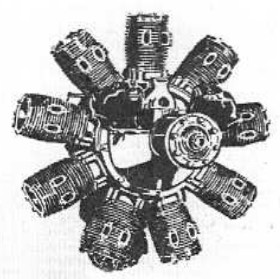
"Continental - Burt McCollum"
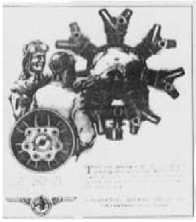
"Aviation engine ad"
-In the year 2011 Continental Motors is acquired by Technify Motors (USA) LTD, a subsidiary of the Chinese AVIC International Company.
-25 years after the Wright brothers' flight they made the 7-cylinder A-70 radial engine with a displacement of 544 cu.in., giving 170 hp at 2,000 rpm.
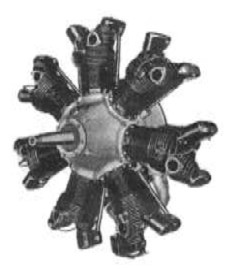
"Continental A-70"
-This engine appeared "clean" at the front, as the rods were at the rear side of the cylinders.
-One derivative was the 7-cylinder radial W-670 also and with 668 cu. in. that started with 220 hp and increased to 250 hp, according to model. Its US Military reference was R-670.

"W-670"
-The W-670-A version with 240 hp was installed on the "Sherman" ground combat armored vehicles.
-Together with Lycoming, Continental has created the widest line of General Aviation engines, more than all the other manufacturers in the world together.
-And in addition it has continued with its maintenance remaining confidence, quality and cost. The basic range is that of horizontally opposed cylinders.
-In 1931, it begins with the A-40, a horizontally opposed 4-cylinder engine that was simple and reliable.
-The cylinder head on each side is common to two cylinders. The engine has an "L-shape" combustion chamber and side valves.
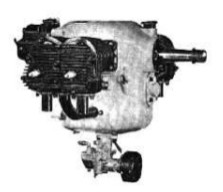
"Continental A-40"
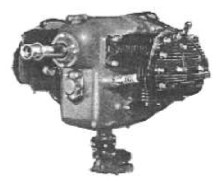
"A-40, Left hand front view"
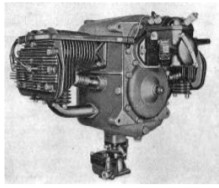
"Another A-40, rear view"
-The "A" series continued with the A-50 in 1938. It gave 50 hp and had a displacement of 171 cu. in. with the same basic configuration but with separate cylinder heads.
-The "A-50" and the following model, "A-65", were designed by Harold Morehouse in the mid-1930's, when he entered to serve Continental Motors.
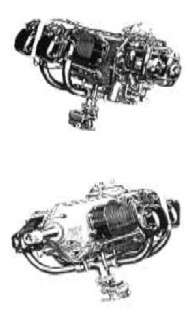
"Continental A-50"
-We note in the A-50 that it does not have oil sump and in the back it has some outlet fittings, filter box, etc, as to dispose of an external tank.
-The "A-65", from 1939 that gives 65 hp, does have an oil sump at the bottom of the engine.
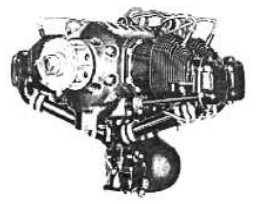
"Continental A-65"
-The A-65 had a great success. There are still countless engines flying today, for example in the Piper Cub. It is the US Military O-170.
-They could have two types of carburetors, Marvel-Schebler or Bendix-Stromberg.
-The magnetos could also be Scintilla from Bendix or Eisemann.
-There were the A-75, A-80 and A-85 with the indicated power, in hp.

"Continental C-75 / 85"
-The "C" series, such as the C75 and C-85 shown were no more than direct derivatives from the A's with the same power.
-The "C-90" was the first genuine engine of the C series. It was bigger than the A-65 with 90 hp and a similar architecture.

"Continental classic logo"
-Much later the O-200 would be derived from the C-90-8F. The C-90-12F had an electric starter. The C90-12FH also had the possibility of a hydraulic pass for the propeller.
-The following C engines already had six-cylinders, such as the C-115, C-125, C-140 and C-145 and they also had these same powers: 115, 125, 140 and 145 hp.
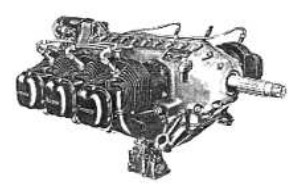
"Continental C-115"
-The C-115 appeared in 1946 with 282 cubic inches, just like the C-125. The C-140 had 301 cu. in. of displacement.
-Precisely from the C-145 would derive the O-300.
-The C-140 shown below has planetary gear.
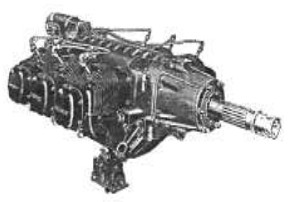
"C-140"
-In 1947 the "E" series came out with the E-165, E-185 and E-225.
-The E-225-8 was the military version of the 225 hp engine that later would have to do with the GIO-470A for which it was base of design. It used low octane fuel such as 80/87.

"Continental E-225"
-Making a step back in time, at the time of the WWII, the specifications changed and engine types were identified in the following way:
-"O", Horizontally opposed cylinders.
- “G”, Geared.
- “S”, Supercharged.
- “TS”, TurboSupercharged.
- “I”, Fuel injection.
-With these new specifications we will get to Continental's most complex engines and recognize them as GTSIO-520 (p.e.), and from which we can deduce their characteristics, but the last figure being the cubic inches cube instead of the power.
-It may be worth mentioning that during the war effort Continental contrived to build necessary engines from other brands such as the Wright Whirlwind R-975, or the Pratt and Whitney R-1340 and the Rolls-Royce Merlin as Packard's subcontractor to equip the P-51 Mustang, under manufacturing licenses.
-In this three quarters rear view (which also favors a lot), we appreciate the whole feeding set as the carburetor, supercharger, intercooler and controls.
-This Merlin engine was known as V-1650-7.
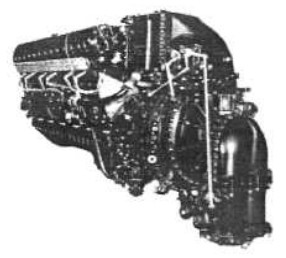
"Continental Merlin"
-Due to other subcontractors such as those of the thin and complicated casting of cylinder heads done by washing machine manufacturer Maytag, the engines of this series were known as the Maytag Messerschmitt.
-Continental made nearly 900 Merlin engines for Packard.
-Going even further back, in 1931, Continental had its power-engine projects, such as the interesting and barely known "Hyper", with the O-1430 nomenclature.
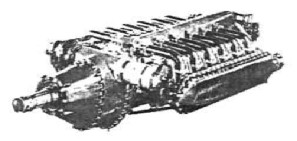
"Continental O-1430"
-With 12 horizontally opposed cylinders, designed by the famous Harold Morehouse (see Erco and Lycoming). More information at USNA Exp. 3367 / 452.8.
-This engine gave way to the inverted V-1430 version of 1,430 cu. in. The V at 60° and giving 1,250/1,350 hp at 3,300 rpm with two types of gear as seen in the following two examples.
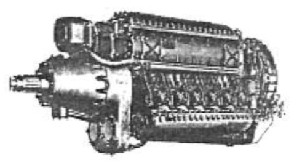
"Continental IV-1430"
-In this example it seems to be epicycloid or planetary gear.
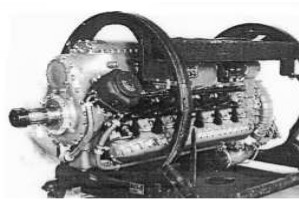
"Continental IV-1430"
-In this other example it seems that it has straight gears.
-Below a rear view of the same engine. It gave more than 2,000 hp at 3,400 rpm, which it achieved with an exaggeratedly high intake pressure: 87.8 inHg. (Inch of mercury).
-Although it gave very good benefits, in 1944 it already was surpassed by others and by the approximation of turbines.
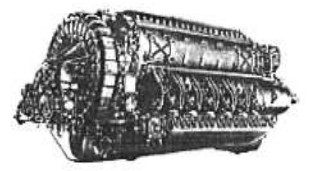
"Continental IV-1430, rear view"
-The first O-1430 with opposed cylinders was inside the wing of an airplane, hence its "crushed" form.
-Taking advantage of the Burt-McCollum device rights, a double-row radial engine, known as XR-1740-2, was built with a total of 14 cylinders.
-This engine was produced for the US Navy and gave 875 hp at 2,600 rpm. Outstanding are the short cylinders and the reduced engine diameter.
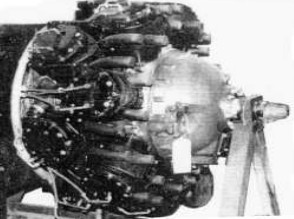
"Continental XR-1740-2"
The letter X tells us that it is an experimental engine. As well as the XR-794S and XR-974S that are exhibited at the Smithsonian Museum in Washington (NASM).
-Now we return to the normal post-war production engines, with opposed cylinders and destined to General Aviation.
-The O-200s were derivatives from the C-90 but with 100 hp and the O-300 was the C-145, with 145 hp. The latter can be geared and becomes GO-300.
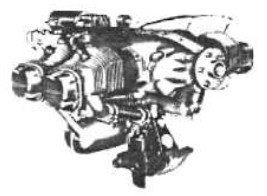
"Continental O-200"

"Continental O-300"

"Continental GO-300"
-The cylinders for the O-200 and the O-300 were the same.
-A common feature to Continental engines, or in most of them, was that the cylinders had a "bottleneck" or "choke".
-This had to be done with a special "controlled cam" rectifier to make the last two inches of the bottom of the cylinder (approx) a few hundredths closer than the rest.
-Later, with the heat and the consequent dilation of the cylinder head, it had the same diameter.
-An unusual series were the IO-346 and the IO-368 with four cylinders instead of the 6 in the IO-470 and IO-520, from which they were derived.
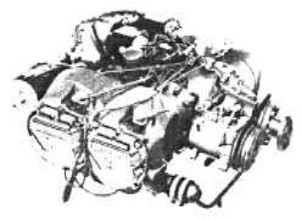
"Continental IO-346"
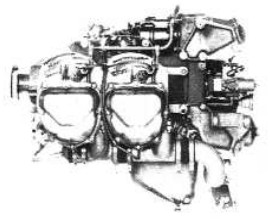
"Continental TSIO-368"
-The TSIO-368 shown above has the injectors next to the spark plugs and they get the fuel in "continuous flow". They also receive the "reference air" from the direct turbo discharge (from the Upper Deck), at higher pressure and causing the fuel to flow to the intake valve.

"Continental IO-360"
-In turn and at the time, the IO-360 was the 6-cylinder version of the four-cylinder O-240. As we will see, these engines have to do more with RR, for the Cessnas made in Europe, (by Max Holste de Reims).

"Continental IO-360"
-It is difficult and complicated to describe the full range of Continental engines, since there are models that have been exclusively military or have had little commercial circulation.
-For example we have found out that the O-170 is the A-65, but the O-190 or the O-205 do not appear in catalogs.
-Besides, variants have been made of almost all Continental engines, with turbo, carburetor or injection, etc.
-Specific submodels and specifications (Spec.) have been derived with a special Dash-Number depending on the aircraft for which it is intended.
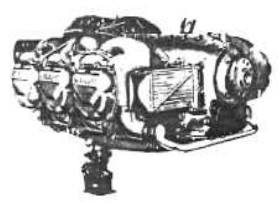
"Continental O-470"
-The O-470 is a classic engine, which gives around 245 hp, and is installed on countless aircraft.
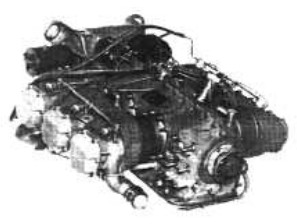
"Continental TSIO-470"
-From this engine were made other rare versions like the FSO-470 that we see below. It was destined to helicopters.
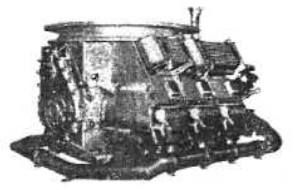
"Continental FSO-470"
-As we see it has fairing and in the upper part there is a fan for cooling when on ground or in stationary flight.
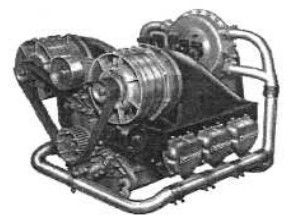
"Continental SO-470"
-Less known was the SO-470, from the previous 470 cubic-inch engine group.
-The cooling was carried out by belt-driven fans and with another transmission at the rear to drive a supercharger.
-Another very important engine is from the IO-520 series. With this engine, Continental Motors used up all available techniques to reach the maximum performances for General Aviation with the GTSIO-520.
-It has all the possible additions: reduction gear, in this case superimposed, turbocharger and intercooler, fuel injection, etc. It gave powers from 340 hp to 435 hp.
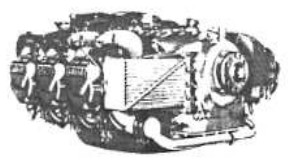
"Continental IO-520"
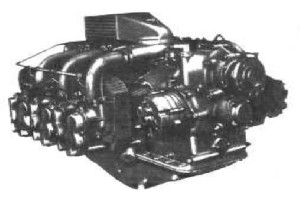
"Continental GTSI-520"
-With the large-capacity turbocharger, it could pressurize the cabin and control its temperature for voyage comfort.
-In 1960, Continental entered into an agreement with Crewe's Rolls-Royce in England to build some of their engines under license for the European market and especially for the Cessnas that were built at the old Max Holste of Reims (France).
-The main models were O-200, O-300, O-240 and IO-360.
-The O-240, as already mentioned, is derived from the six-cylinder IO-360, intended to replace the O-200 (improved C-90) and with 130 hp.
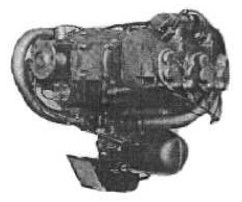
"Continental O-240"
-Another engine that had lowered expectations was the "Tiara", known by the designation "6-285" of 285 HP. (From 1965 until the 80's).
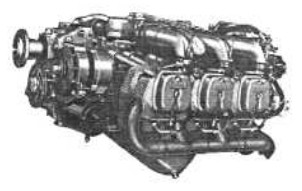
"Tiara"
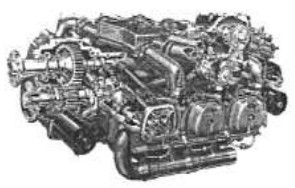
"Tiara, cutaway"
-The main feature was that the propeller rotated exactly at half the crankshaft rotations.
-In fact, the camshaft was driven by the reduction gear for the propeller.
-At the outset of their existence, half jokingly, it was said that the propeller was mounted "on the camshaft." Other versions of this engine have been the 4-180, 6-260, 6-320 and T6-320. And 8-380, 8-450 and 8-545.
-A rare and barely known Tiara of eight horizontal cylinders has been located recently.
-Remember that the Tiara is a family of Continental engines with gear, in which the propeller sprocket drives the camshaft on the other side. That is, with the propeller rotating at half crankshaft speed for that reason.

"Desconocido Tiara de 8 cilindros"
-The last line of classic Continental engines (1990's) for general aviation has been the liquid-cooled "Voyager". The T-550 was the first one.
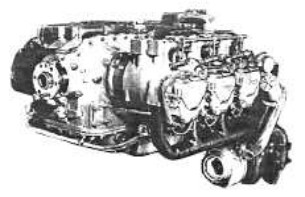
"Continental T-550"
-The IOL-200 model with 110 hp follows the O-200 saga, with four cylinders.
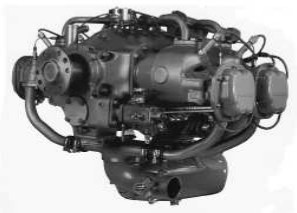
"Continental IOL-200"
-The 6-cylinder version "Voyager 300" is also offered with cylinders that are identical to the IOL.200.
-Gasoline injection is known as "IOL-". In the case of the IOL-550 it is the T-550.

"Continental IOL-300"
-There were also some tests that did not work, either because of lack of market or because the tests were not satisfactory enough. These were the Wankel rotary engines (something similar happened with John-Deere and Lycoming).
-Around 1985 at the Paris Air Show were presented the R-18 engine with 40 hp and the double body version, the R-36 of 85 hp with only 588 cc of displacement and concentric gear.
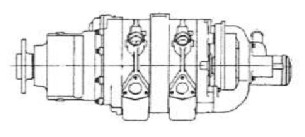
"R-36"
-Finally, the gasoline engine production stopped due to future limitations for the use of tetraethyllead additives in aviation AVGAS that is used to obtain greater octanaje, and besides there was no substitute in sight at that time. The factories were developing Diesel engines that would work with automotive fuels (Gas-oil or Diesel) and with Kerosene, indifferently.
-Continental made deals with Perkins Diesel, UK, to build the 2-stroke CSD-283.
-This engine was supercharged to obtain cylinder filling at altitude, which is essential for Diesel engines.
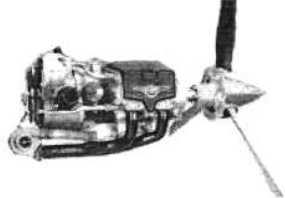
"Continental-Perkins"
-It had 4 cylinders with a forecast of 6 and 8-cylinder engines that would give from 200 to 500 hp. Another attraction is the lower consumption and therefore greater autonomy if it is replaced in current aircraft with gasoline engines (retrofit process), with the same fuel tanks.
-As the limitation for using Avgas 100 LL gasolines comes from environmental regulations, especially in Europe and North America, the attempt to launch Diesel engines running on the same JET-A1 kerosene as reactor engines, which is available at all airports, will be favored by new legislation.
-The GAP model, developed with General Aviation Propulsion is based on the 0-240, two-stroke Diesel.
-Studies and projects from 1961 to 2001. Giving 200 hp at 2,200 rpm.
-About collaborations with other brands, we comment that in the 1940's they had one with Coventry Climax, UK, for manufacturing their engines under license. After that came the already commented agreement with Rolls-Royce.
-In 2003 they reached agreements with Honda Motor Co. from Japan to build a new family of horizontally opposed cylinder engines to run on 93 octane Unleaded Automotive gasoline (UL = UnLeaded).
-The prototype is the 225 hp engine with FADEC type control.
-Continental sees how its engines are modified with more or less fortune by companies like RAM, Mattituck, Nickel etc, which offer some added benefits due to more refinement.
-Before completing the Continental Piston Motors chapter, we will mention the newly introduced GR-9A. Of course during the first era of the brand.
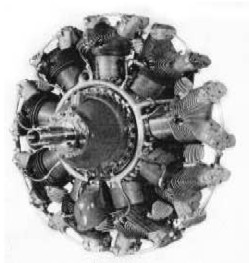
"Continental GR-9A"
-In the field of jet engines, Continental has already made tests with Ramjets, such as the XRJ-35-T1, for operating optimally at high altitude and high Mach. Although the project was canceled and the data remained confidential.
-Regarding the Continental Ramjets: RJ-35 and RJ-49, there is more information in the Nasm files.
-The XRJ-45-T1 (R-20), also a Continental engine, remained on papers, and the same happened with the XRJ-49-T1, since in both cases the project was canceled at this stage.
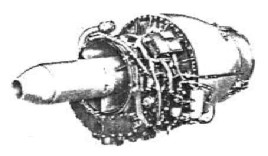
"CAE J-69"
-The other Continental Division, "CAE" is essentially dedicated to turbines. "Continental Aviation and Engineering Corp.", a subsidiary of Teledyne-Continental Motors, began manufacturing turbojet engines under license from Turbomeca. The first one, the Marboré II, was destined to the Cessna T-37 "Dragonfly", and had the military denomination of J-69 (J of "Jet").
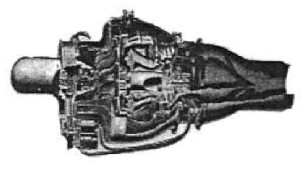
"J-69, cutaway"
-The Marboré J-69 was developed by CAE to comply with the North American requirements. Accessories became genuine American.
-They are low-power engines, but the T-37 had two engines with 920 lbs. of thrust at 22,700 rpm.
-This engine model had CAE designation 352.
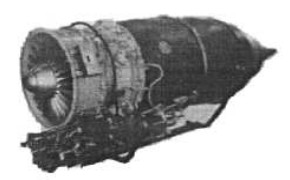
"CAE - Larzac"
-The American version of Turbomeca's "Larzac", a turbofan that delivered 3,000 lbs. of thrust, had the CAE denomination 490-4.
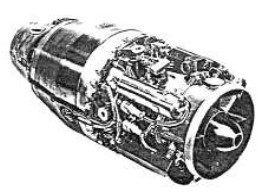
"CAE J-402"
-Other engines were the J-402-CA-400 (CAE 372) that only had 290 Kgs of thrust. They were used for target airplanes, etc.
-The CAE 356-28E was for high-altitude drone applications such as the Ryan Drone.
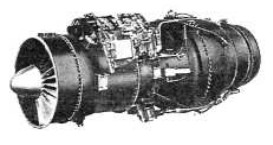
"CAE 356"
-The JE-69-T-29 was the engine we saw before, repowered to 1,700 lbs.
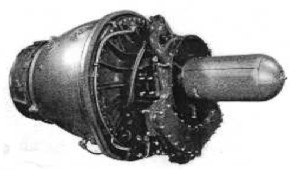
"CAE J-69, basic"
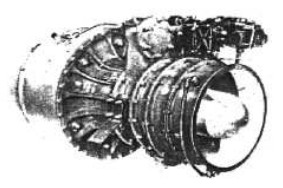
"J-69-T-29"
-The J-69-T-25 was also repowered to 1,025 lbs., and was denominated as CAE 352-5A.
-As an engine for generating air, there was Model 141, derived from Turbomeca's "Palouste", to help starting up other larger engines, and for special applications in helicopters, etc.

"CAE 141 - Palouste"

"Model 141"
-By 1964 the CAE 217A-2 engines (specification XT-67-T-1) with 770 SHP were intended for Bell helicopters. They were two coupled engines.
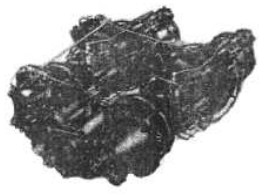
"XT-67, double engine"
-The two engines were spinning at 32,400 rpm while the output shaft rotated at 6,000 rpm.
-From the same time is the turboshaft T-65-T-1 that gave 310 SHP. It had a free turbine for power output. The CAE reference was TS-325-1.

"TS-325"
-It is interesting to mention a small turbine, called CAE 305 "SCAT" (Subsonic Compact All-Purpose Turbojet). This was the beginning of a family from which we know the 312 and 320 engines.

"305 SCAT"
-It is a pioneering engine used in the Harpoons and in the first cruise missiles, RPV's, shooting trainers, etc.
-They gave 40 lbs. of thrust, and were 6'6 inches in diameter and 11 in length. They weighed 12 lbs.
-These engines only had 10 parts, and were manufactured in 15 operations.

"305 parts"
-Continental radial engines were used in World War II for the powering armored tanks such as Shermans. See main text.
-In Europe there were a large number of these tanks and Snecma was in charge of carrying out the general service of these engines.
-For this reason, at the current Safran museum in Villaroche, you can see one with its fairings and fan for forced cooling. We have two illustrations.
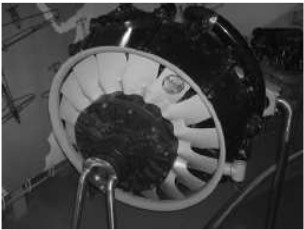
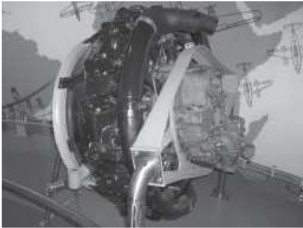
"Continental Radial at the Safran Museum"
Engines of CONTINENTAL Part 1
Model: 141 (Palouste)
Arquitecture:
Compressor/s:
Combustion chambers:
Turbines:
Power / Thrust:
Weight:
As an engine for generating air, there was Model 141, derived from Turbomeca's "Palouste", to help starting up other larger engines, and for special applications in helicopters, etc.

"Continental - Model 141"
Model: 217 (217A-2) (XT-67-T-1)
Arquitecture: Turboshaft
Compressor/s:
Combustion chambers:
Turbines:
Power / Thrust: 770SHP / ---
Weight:
The CAE 217A-2 engines (specification XT-67-T-1) were intended for Bell helicopters. They were two coupled engines. The two engines were spinning at 32,400 rpm while the output shaft rotated at 6,000 rpm.

"Continental - XT-67, twin engine"
Model: 220
Model: 260
Model: 305, -7E
Arquitecture: Turbojet
Compressor/s:
Combustion chambers:
Turbines:
Power / Thrust: --- / 40 Lbf
Weight:
"SCAT" (Subsonic Compact All-Purpose Turbojet).
They were 6'6 inches in diameter and 11 in length, and weighed 12 lbs. These engines only had 10 parts, and were manufactured in 15 operations.

"Continental - 305 SCAT"
Model: 312
Model: 320
Arquitecture: Turbojet
Compressor/s:
Combustion chambers:
Turbines:
Power / Thrust:
Weight:
Model: 352
Arquitecture: Turbojet
Compressor/s:
Combustion chambers:
Turbines:
Power / Thrust: --- / 1025 Lbf
Weight:
The J-69-T-25 was denominated as CAE 352-5A.
Model: 356
Arquitecture: Turbofan
Compressor/s:
Combustion chambers:
Turbines:
Power / Thrust:
Weight:
The CAE 356-28E was for high-altitude drone applications such as the Ryan Drone.

"Continental - CAE 356"
Model: 372
Arquitecture: Turbojet
Compressor/s:
Combustion chambers:
Turbines:
Power / Thrust: --- / 290 kN
Weight:
They were used for target airplanes,
Model: A-100
Arquitecture: 6-cylinder Horizontally opposed
Cooling:
Total Displacement:
Bore / Stroke:
Power: 100 HP @ rpm
Weight:

"Continental A-100"
Model: A-40
Arquitecture: 4-cylinder Horizontally opposed
Cooling:
Total Displacement:
Bore / Stroke:
Power: @ rpm
Weight:
The cylinder head on each side is common to two cylinders. The engine has an "L-shape" combustion chamber and side valves.
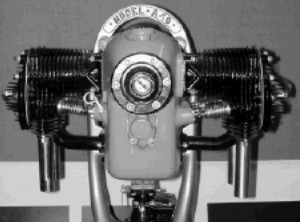
"Continental A-40" (PeT)
Model: A-50
Arquitecture: 4-cylinder Horizontally opposed
Cooling:
Total Displacement: 171 cu. in.
Bore / Stroke:
Power: 50 HP @ rpm
Weight:
We note in the A-50 that it does not have oil sump and in the back it has some outlet fittings, filter box, etc, as to dispose of an external tank.

"Continental A-50"
Model: A-65 (O-170)
Arquitecture: Horizontally opposed
Cooling:
Total Displacement:
Bore / Stroke:
Power: 65 HP @ rpm
Weight:
It has an oil sump at the bottom of the engine. It is the US Military O-170. They could have two types of carburetors, Marvel-Schebler or Bendix-Stromberg. The magnetos could also be Scintilla from Bendix or Eisemann.

"Continental A-65"
Model: A-70
Arquitecture: 7-cylinder Radial
Cooling:
Total Displacement: 544 cu. in.
Bore / Stroke:
Power: 170 HP @ 2000 rpm
Weight:
It used Burt-McCollum type sliding sleeves.

"Continental A-70"
Model: A-75
Arquitecture: 4-cylinder Horizontally opposed
Cooling:
Total Displacement:
Bore / Stroke:
Power: 75 HP @ rpm
Weight:
Model: A-80
Arquitecture: 4-cylinder Horizontally opposed
Cooling:
Total Displacement:
Bore / Stroke:
Power: 80 HP @ rpm
Weight:
Model: A-85
Arquitecture: 4-cylinder Horizontally opposed
Cooling:
Total Displacement:
Bore / Stroke:
Power: 85 HP @ rpm
Weight:
Model: A-90
Arquitecture:
Cooling:
Total Displacement:
Bore / Stroke:
Power: @ rpm
Weight:
Model: Boxer 20 hp
Arquitecture: 2-cylinder Horizontally opposed
Cooling:
Total Displacement: 16.7 cu. in.
Bore / Stroke:
Power: 20 HP @ rpm
Weight:
It can certainly be 25-27 HP as it has growth capacity. It can operate up to 12,000 feet altitude.
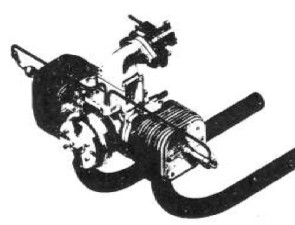
"Continental, 20 hp engine"
Model: Burt-McCollum, radial 200 HP
Arquitecture:
Cooling:
Total Displacement:
Bore / Stroke:
Power: @ rpm
Weight:

"Continental - Burt McCollum"
Model: C-115
Arquitecture: 6-cylinder Horizontally opposed
Cooling:
Total Displacement: 282 cu. in.
Bore / Stroke:
Power: 115 HP @ rpm
Weight:

"Continental C-115"
Model: C-125
Arquitecture: 6-cylinder Horizontally opposed
Cooling:
Total Displacement: 282 cu. in.
Bore / Stroke:
Power: 125 HP @ rpm
Weight:
Model: C-140
Arquitecture: 6-cylinder Horizontally opposed
Cooling:
Total Displacement: 301 cu. in.
Bore / Stroke:
Power: 140 HP @ rpm
Weight:

"Continental - C-140"
Model: C-145
Arquitecture: 6-cylinder Horizontally opposed
Cooling:
Total Displacement:
Bore / Stroke:
Power: @ rpm
Weight:
Model: C-175
Arquitecture:
Cooling:
Total Displacement:
Bore / Stroke:
Power: @ rpm
Weight:
Model: C-75
Arquitecture: 4-cylinder Horizontally opposed
Cooling:
Total Displacement:
Bore / Stroke:
Power: 75 HP @ rpm
Weight:
Derived from the A-75.

"Continental C-75 / 85"
Model: C-85
Arquitecture: 4-cylinder Horizontally opposed
Cooling:
Total Displacement:
Bore / Stroke:
Power: 85 HP @ rpm
Weight:
Derived from the A-85
Model: C-90
Arquitecture: 4-cylinder Horizontally opposed
Cooling:
Total Displacement:
Bore / Stroke:
Power: 90 HP @ rpm
Weight:
The "C-90" was the first genuine engine of the C series. It was bigger than the A-65 with 90 hp and a similar architecture.
Model: Continental estacionario 6 cyl.
Arquitecture:
Cooling:
Total Displacement:
Bore / Stroke:
Power: @ rpm
Weight:
Model: CSD-283 (Perkins)
Arquitecture: 4-cylinder Horizontally opposed
Cooling:
Total Displacement:
Bore / Stroke:
Power: 200 HP @ rpm
Weight:
Supercharged in two stages (mechanical and turbo).

"Continental-Perkins CSD-283"
Model: E-165
Arquitecture: 6-cylinder Horizontally opposed
Cooling:
Total Displacement:
Bore / Stroke:
Power: 165 HP @ rpm
Weight:
Model: E-185
Arquitecture: 6-cylinder Horizontally opposed
Cooling:
Total Displacement:
Bore / Stroke:
Power: 185 HP @ rpm
Weight:
Model: E-225
Arquitecture: 6-cylinder Horizontally opposed
Cooling:
Total Displacement:
Bore / Stroke:
Power: 225 HP @ rpm
Weight:

"Continental E-225"
Model: GAP-240
Arquitecture:
Cooling:
Total Displacement:
Bore / Stroke:
Power: @ rpm
Weight:
Model: GR9-A / R9-A
Arquitecture: 9-cylinder Radial
Cooling: Air
Total Displacement:
Bore / Stroke:
Power: @ rpm
Weight:

"Continental GR-9A"
Model: IO-360-AF
Arquitecture:
Cooling:
Total Displacement:
Bore / Stroke:
Power: @ rpm
Weight:
Model: IV-1430
Arquitecture: V-Engine
Cooling:
Total Displacement: 1430 cu. in.
Bore / Stroke:
Power: 1250 / 1350 HP @ 3300 rpm
Weight:
Inverted V engine with V at 60°.

"Continental IV-1430, rear view"
Model: J-402-400, -700, -701, -702 (CAE 372)
Arquitecture: Turbojet
Compressor/s:
Combustion chambers:
Turbines:
Power / Thrust: --- / 290 kN
Weight:
They were used for target airplanes.
An engine with a diameter of only 12.5 inches by a length of less than 30 inches. Starting is produced by a cartridge that generates large amount of gases affecting the turbine blades.
The -400s had only one hour of service life.
The -700s were reusable and had an improved lubrication system, but they had only 15 hours of service life.

"Continental - CAE J-402"
Model: J-69 (CAE 352)
Arquitecture: Turbojet
Compressor/s: Single stage centrifugal
Combustion chambers: Single annular combustion chamber
Turbines: Single stage
Power / Thrust: --- / 880 Lbf
Weight:

"CAE J-69, basic"
Model: Larzac (Lic.) (CAE 490-4)
Arquitecture: Turbofan
Compressor/s:
Combustion chambers:
Turbines:
Power / Thrust: --- / 3000 Lbf
Weight:

"Continental - CAE - Larzac"
Model: NASA
Arquitecture: 4-cylinder Radial
Cooling: Liquid
Total Displacement:
Bore / Stroke:
Power: 200 HP @ rpm
Weight:
There were two versions, one in the classic vertical position with gear and the other one in horizontal position.
Supercharged, two-stroke Diesel engine.
It did not come any further than a prototype without being commercialized. This was towards 1985.
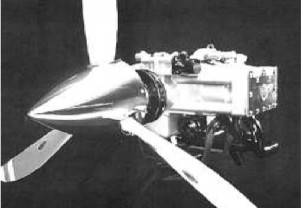
"Continental-NASA"
Model: O-110
Arquitecture:
Cooling:
Total Displacement:
Bore / Stroke:
Power: @ rpm
Weight:
Model: O-1430 (V-, IV-, I-, OL-)
Arquitecture: 12-cylinder Horizontally opposed
Cooling:
Total Displacement:
Bore / Stroke:
Power: @ rpm
Weight:

"Continental O-1430"
Model: O-170
Arquitecture:
Cooling:
Total Displacement:
Bore / Stroke:
Power: @ rpm
Weight:
Model: O-190
Arquitecture:
Cooling:
Total Displacement:
Bore / Stroke:
Power: @ rpm
Weight:
Model: O-200 (2008)
Arquitecture: 4-cylinder Horizontally opposed
Cooling:
Total Displacement:
Bore / Stroke:
Power: 100 HP @ rpm
Weight:
Teledyne Continental has redesigned the classic O-200 engine that gave 100 hp, with improvements to adapt it to the current times. With a total "dry" weight of 158 pounds, and with everything installed, including accessories it weighed 209 pounds.
It can run on AVGAS and MOGAS, aviation and automotive gasoline.
Model: O-200 (OL-, IOL-)
Arquitecture: 4-cylinder Horizontally opposed
Cooling:
Total Displacement:
Bore / Stroke:
Power: 100 HP @ rpm
Weight:
Derived from the C-90-8F

"Continental IOL-200"
Model: O-200-AF
Arquitecture:
Cooling:
Total Displacement:
Bore / Stroke:
Power: @ rpm
Weight:
Model: O-205
Arquitecture:
Cooling:
Total Displacement:
Bore / Stroke:
Power: @ rpm
Weight:
Model: O-240
Arquitecture: 4-cylinder Horizontally opposed
Cooling:
Total Displacement: 240
Bore / Stroke:
Power: 130 HP @ rpm
Weight:
The O-240 is derived from the six-cylinder IO-360.

"Continental O-240"
Model: O-255
Arquitecture:
Cooling:
Total Displacement:
Bore / Stroke:
Power: @ rpm
Weight:
Model: O-270
Arquitecture:
Cooling:
Total Displacement:
Bore / Stroke:
Power: @ rpm
Weight:
Model: O-280
Arquitecture:
Cooling:
Total Displacement:
Bore / Stroke:
Power: @ rpm
Weight:
Model: O-300 (GO-, OL-, IOL-)
Arquitecture: 4-cylinder Horizontally opposed
Cooling:
Total Displacement:
Bore / Stroke:
Power: 145 HP @ rpm
Weight:
Derived from the C.145. The engine can be geared and becomes GO-300.

"Continental IOL-300"
Model: O-315
Arquitecture:
Cooling:
Total Displacement:
Bore / Stroke:
Power: @ rpm
Weight:
Model: O-346 (IO-)
Arquitecture: 4-cylinder Horizontally opposed
Cooling:
Total Displacement:
Bore / Stroke:
Power: @ rpm
Weight:

"Continental IO-346"
Model: O-360 (IO-, TIO-)
Arquitecture: Horizontally opposed
Cooling:
Total Displacement:
Bore / Stroke:
Power: @ rpm
Weight:
The IO-360 was the 6-cylinder version of the four-cylinder O-240.

"Continental IO-360"
Model: O-368 (TSIO- IO- )
Arquitecture: 4-cylinder Horizontally opposed
Cooling:
Total Displacement:
Bore / Stroke:
Power: @ rpm
Weight:

"Continental TSIO-368"
Model: O-370 (OL-, Honda)
Arquitecture: 4-cylinder Horizontally opposed
Cooling: Liquid
Total Displacement: 370 cu. in.
Bore / Stroke:
Power: 225 HP @ 2700 rpm
Weight:
Prepared for using MOGAS fuel or unleaded automotive gasoline. It could also use AV-GAS 100 LL.

"Continental/Honda, rear view"
Model: O-405
Arquitecture:
Cooling:
Total Displacement:
Bore / Stroke:
Power: @ rpm
Weight:
Model: O-470 (TSIO-, SO-, FSO- )
Arquitecture: 6-cylinder Horizontally opposed
Cooling:
Total Displacement: 470 cu. in.
Bore / Stroke:
Power: 245 HP @ rpm
Weight:

"Continental FSO-470"
Model: O-520 (IO-, TSIO-, GTSIO-)
Arquitecture: 6-cylinder Horizontally opposed
Cooling:
Total Displacement: 520 cu. in.
Bore / Stroke:
Power: 340 / 435 HP @ rpm
Weight:

"Continental GTSI-520"
Model: O-526
Arquitecture:
Cooling:
Total Displacement:
Bore / Stroke:
Power: @ rpm
Weight:
Model: O-540
Arquitecture:
Cooling:
Total Displacement:
Bore / Stroke:
Power: @ rpm
Weight:
Model: O-550 (OL-)
Arquitecture:
Cooling:
Total Displacement:
Bore / Stroke:
Power: @ rpm
Weight:
Model: R-18
Arquitecture:
Cooling:
Total Displacement:
Bore / Stroke:
Power: 40 HP @ rpm
Weight:
Model: R-20 (XRJ-45-T1)
Arquitecture: Ramjet
Chambers:
Fuels:
Feed System:
Ignition:
Thrust:
Weight:
The XRJ-45-T1 (R-20) remained on papers. The project was canceled at this stage.
Model: R-36
Arquitecture:
Cooling:
Total Displacement: 588 cc
Bore / Stroke:
Power: 85 HP @ rpm
Weight:

"Continental - R-36"
Model: R-545
Arquitecture:
Chambers:
Fuels:
Feed System:
Ignition:
Thrust:
Weight:
Model: R-670
Arquitecture:
Chambers:
Fuels:
Feed System:
Ignition:
Thrust:
Weight:
Model: RJ-35
Arquitecture: Ramjet
Chambers:
Fuels:
Feed System:
Ignition:
Thrust:
Weight:
Model: RJ-45
Arquitecture:
Chambers:
Fuels:
Feed System:
Ignition:
Thrust:
Weight:
Model: RJ-49
Arquitecture: Ramjet
Chambers:
Fuels:
Feed System:
Ignition:
Thrust:
Weight:
Model: T-51
Arquitecture: Turboprop
Compressor/s:
Combustion chambers:
Turbines:
Power / Thrust: 280SHP / 40 Lbf
Weight:

"Continental T-51"
Model: T-65 (CAE TS-325-1)
Arquitecture: Turboshaft
Compressor/s:
Combustion chambers:
Turbines:
Power / Thrust: 310SHP / ---
Weight:
Model: T-67
Arquitecture:
Compressor/s:
Combustion chambers:
Turbines:
Power / Thrust:
Weight:
Model: T-69
Arquitecture:
Compressor/s:
Combustion chambers:
Turbines:
Power / Thrust:
Weight:
Model: T-72
Arquitecture:
Compressor/s:
Combustion chambers:
Turbines:
Power / Thrust:
Weight:
Model: TC-140
Arquitecture: Turbojet
Compressor/s:
Combustion chambers:
Turbines:
Power / Thrust:
Weight:

"Continental TC-140"
Model: TD-220
Arquitecture: 4-cylinder Horizontally opposed
Cooling: Liquid
Total Displacement:
Bore / Stroke:
Power: @ rpm
Weight:
Turbo-Diesel engine.
Model: TD-300
Arquitecture: 4-cylinder Horizontally opposed
Cooling:
Total Displacement:
Bore / Stroke:
Power: 200 / 250 HP @ rpm
Weight:
Diesel engine.
Model: TD-450
Arquitecture: 6-cylinder Horizontally opposed
Cooling:
Total Displacement:
Bore / Stroke:
Power: 300 / 350 HP @ rpm
Weight:
Turbo-Diesel engine.
Model: Tiara 4-180
Arquitecture: 4-cylinder Horizontally opposed
Cooling:
Total Displacement:
Bore / Stroke:
Power: 180 HP @ rpm
Weight:
Model: Tiara 6-260
Arquitecture: 6-cylinder Horizontally opposed
Cooling:
Total Displacement:
Bore / Stroke:
Power: 260 HP @ rpm
Weight:

"Continental - Tiara"
Model: Tiara 6-285
Arquitecture: 6-cylinder Horizontally opposed
Cooling:
Total Displacement:
Bore / Stroke:
Power: 285 HP @ rpm
Weight:
The main feature was that the propeller rotated exactly at half the crankshaft rotations. The camshaft was driven by the reduction gear for the propeller.
Model: Tiara 6-320
Arquitecture: 6-cylinder Horizontally opposed
Cooling:
Total Displacement:
Bore / Stroke:
Power: 320 HP @ rpm
Weight:
Model: Tiara 8-380
Arquitecture: 8-cylinder Horizontally opposed
Cooling:
Total Displacement:
Bore / Stroke:
Power: 380 HP @ rpm
Weight:

"Unknown Continental 8-cylinder Tiara"
Model: Tiara 8-450
Arquitecture: 8-cylinder
Cooling:
Total Displacement:
Bore / Stroke:
Power: 450 HP @ rpm
Weight:
Model: Tiny Tim
Arquitecture: Single-cylinder
Cooling:
Total Displacement:
Bore / Stroke:
Power: @ rpm
Weight:
Auxiliary engine. Two-quarters of a gallon were enough to let the engine run for eight hours.
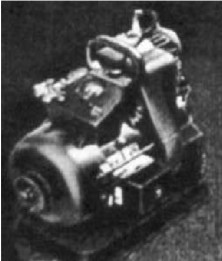
"El Tiny Tim de Continental"
Model: TP-500
Model: TS-325
Arquitecture:
Compressor/s:
Combustion chambers:
Turbines:
Power / Thrust:
Weight:

"Continental - TS-325"
Model: V-1650 (RR Merlin Lic.)
Arquitecture: 12-cylinder V-Engine
Cooling: Liquid
Total Displacement:
Bore / Stroke:
Power: @ rpm
Weight:

"Continental Merlin"
Model: Voyager 200
Arquitecture: 4-cylinder Horizontally opposed
Cooling: Liquid
Total Displacement:
Bore / Stroke:
Power: 110 HP @ rpm
Weight:
Model: Voyager 300
Arquitecture: 6-cylinder Horizontally opposed
Cooling: Liquid
Total Displacement:
Bore / Stroke:
Power: @ rpm
Weight:
Model: Voyager 370
Arquitecture:
Cooling:
Total Displacement:
Bore / Stroke:
Power: @ rpm
Weight:
Model: Voyager 550 (T-550)
Arquitecture: 6-cylinder Horizontally opposed
Cooling: Liquid
Total Displacement:
Bore / Stroke:
Power: @ rpm
Weight:

"Continental T-550"
Model: W-670 (R-670)
Arquitecture: 7-cylinder Radial
Cooling:
Total Displacement: 668 cu. in.
Bore / Stroke:
Power: 220 / 250 HP @ rpm
Weight:
Derived from the A-70 engine. Its US Military reference was R-670.

"Continental W-670"
Model: XH-2860
Model: XR-1740-2
Arquitecture: 14-cylinder Radial
Cooling:
Total Displacement:
Bore / Stroke:
Power: 875 HP @ 2600 rpm
Weight:
Outstanding are the short cylinders and the reduced engine diameter. The letter X tells us that it is an experimental engine.

"Continental XR-1740-2"
Model: XR-794S
Arquitecture: 7-cylinder Radial
Cooling:
Total Displacement:
Bore / Stroke:
Power: @ rpm
Weight:
No valves, but sliding sleeves.

"Continental - XR-794S"
Model: XR-974S
Arquitecture:
Cooling:
Total Displacement:
Bore / Stroke:
Power: @ rpm
Weight:


